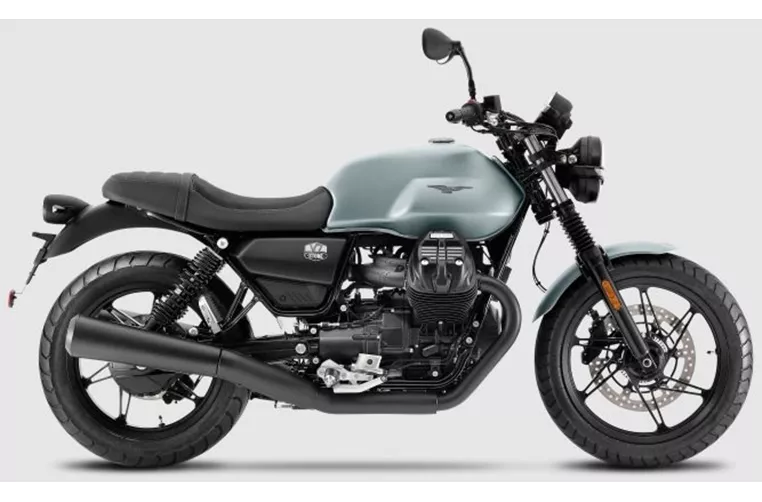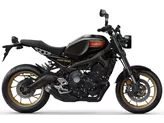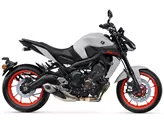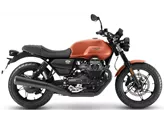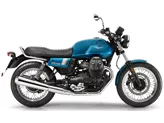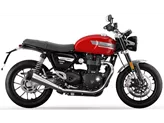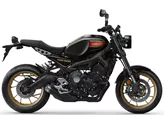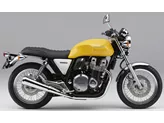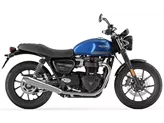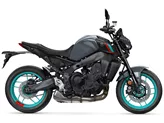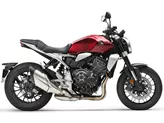Yamaha XSR900 2018 vs. Moto Guzzi V7 Stone 2022

Yamaha XSR900 2018
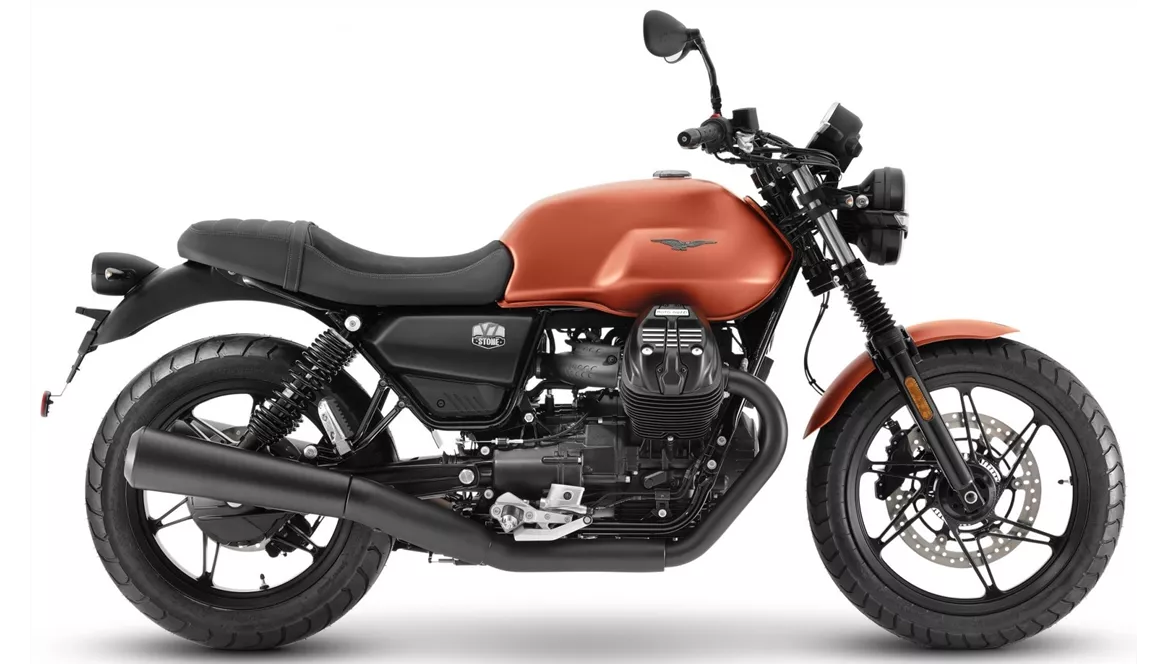
Moto Guzzi V7 Stone 2022
Overview - Yamaha XSR900 2018 vs Moto Guzzi V7 Stone 2022
The Yamaha XSR900 2018 and the Moto Guzzi V7 Stone 2022 are both naked bikes, but they have some notable differences in terms of their technical specifications and overall performance.
Starting with the engine and drive train, the Yamaha XSR900 2018 is equipped with an in-line, liquid-cooled engine with a displacement of 847cc. It delivers a powerful 115 horsepower and 87.5 Nm of torque, thanks to its three cylinders. On the other hand, the Moto Guzzi V7 Stone 2022 features a V-twin, air-cooled engine with a displacement of 853cc. It produces 65 horsepower and 73 Nm of torque, making it less powerful compared to the Yamaha XSR900.
In terms of suspension, the Yamaha XSR900 2018 comes with an upside-down telescopic fork at the front and a swing arm with a monoshock at the rear. This setup provides excellent stability and handling on various road conditions. The Moto Guzzi V7 Stone 2022, on the other hand, features a telescopic fork at the front and a swing arm with dual shocks at the rear. While this setup may not offer the same level of performance as the Yamaha XSR900, it still provides a comfortable ride.

Yamaha XSR900 2018
When it comes to the chassis, the Yamaha XSR900 2018 has an aluminum frame with a twin-tube design. This construction ensures a lightweight yet sturdy structure, contributing to the bike's overall agility. The Moto Guzzi V7 Stone 2022, on the other hand, features a steel frame with a double cradle design, which may make it slightly heavier compared to the Yamaha XSR900.
In terms of braking, the Yamaha XSR900 2018 is equipped with double disc brakes at the front with a diameter of 298mm, providing excellent stopping power. The Moto Guzzi V7 Stone 2022, on the other hand, has a single disc brake at the front with a larger diameter of 320mm. While it may not have the same level of braking performance as the Yamaha XSR900, it still offers sufficient stopping power.
Both bikes are equipped with advanced rider assistance systems such as ABS, ensuring enhanced safety during braking. However, the Moto Guzzi V7 Stone 2022 also features traction control, which further improves stability and control.
In terms of dimensions and weights, the Yamaha XSR900 2018 has a front tire width of 120mm and a rear tire width of 180mm, both with a diameter of 17 inches. It has a wheelbase of 1440mm, a seat height of 815mm, and a kerb weight of 188kg. The fuel tank capacity is 14 liters. On the other hand, the Moto Guzzi V7 Stone 2022 has a front tire width of 100mm and a rear tire width of 150mm, with a front tire diameter of 18 inches and a rear tire diameter of 17 inches. It has a slightly longer wheelbase of 1450mm, a lower seat height of 780mm, and a higher kerb weight of 218kg. The fuel tank capacity is significantly larger at 21 liters.
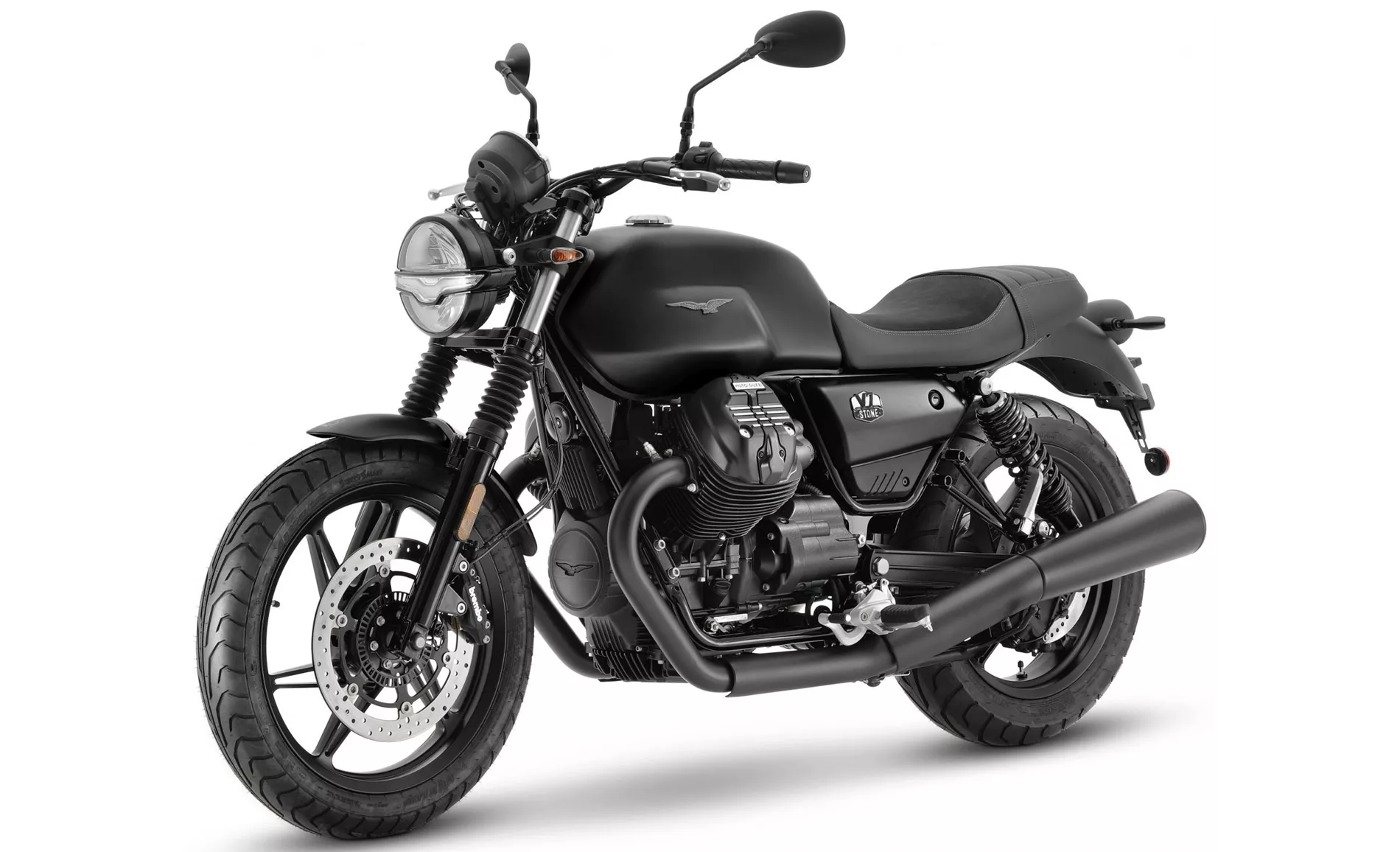
Moto Guzzi V7 Stone 2022
In terms of strengths, the Yamaha XSR900 2018 offers an extremely sporty and rev-happy engine, excellent brakes, and a pleasant seating position. Its high-quality workmanship and price-performance ratio are also noteworthy. On the other hand, the Moto Guzzi V7 Stone 2022 features a modern engine with a classic feel, a low-maintenance cardan drive, and a comfortable seating position. Its good single-disc brake at the front and superb design are also notable strengths.
However, the Yamaha XSR900 2018 does have some weaknesses, such as its almost too direct response and a retro style that may not be thought through to the last detail. The Moto Guzzi V7 Stone 2022, on the other hand, has weaknesses including LCD fittings that are not optimally readable and a strongly delayed gear display. Additionally, it has a higher weight compared to the Yamaha XSR900.
In conclusion, while both the Yamaha XSR900 2018 and the Moto Guzzi V7 Stone 2022 have their own strengths and weaknesses, they cater to different preferences and riding styles. The Yamaha XSR900 offers a more sporty and performance-oriented experience, while the Moto Guzzi V7 Stone provides a classic and comfortable ride. Ultimately, the choice between the two will depend on individual preferences and priorities.
Technical Specifications Yamaha XSR900 2018 compared to Moto Guzzi V7 Stone 2022
Pros and Cons in comparison
Pros and Cons in comparison
Yamaha XSR900 2018

The Yamaha XSR900 is a classic optical illusion - with its round headlight, angular tank and attached tail light, it clearly passes for a retro bike. But it's no coincidence that the performance is reminiscent of the potent mid-range naked bike Yamaha MT-09, which is the extremely sporty basis for the XSR900. So the engine is a blast and the brakes are appropriately venomous. Fortunately, the engineers didn't overdo it with the chassis, the XSR900 offers sufficient comfort and the upright riding position is more comfortable than the powerful engine would lead one to expect. All in all, the XSR900 is one of the sportiest models among the retro bikes.
Moto Guzzi V7 Stone 2022
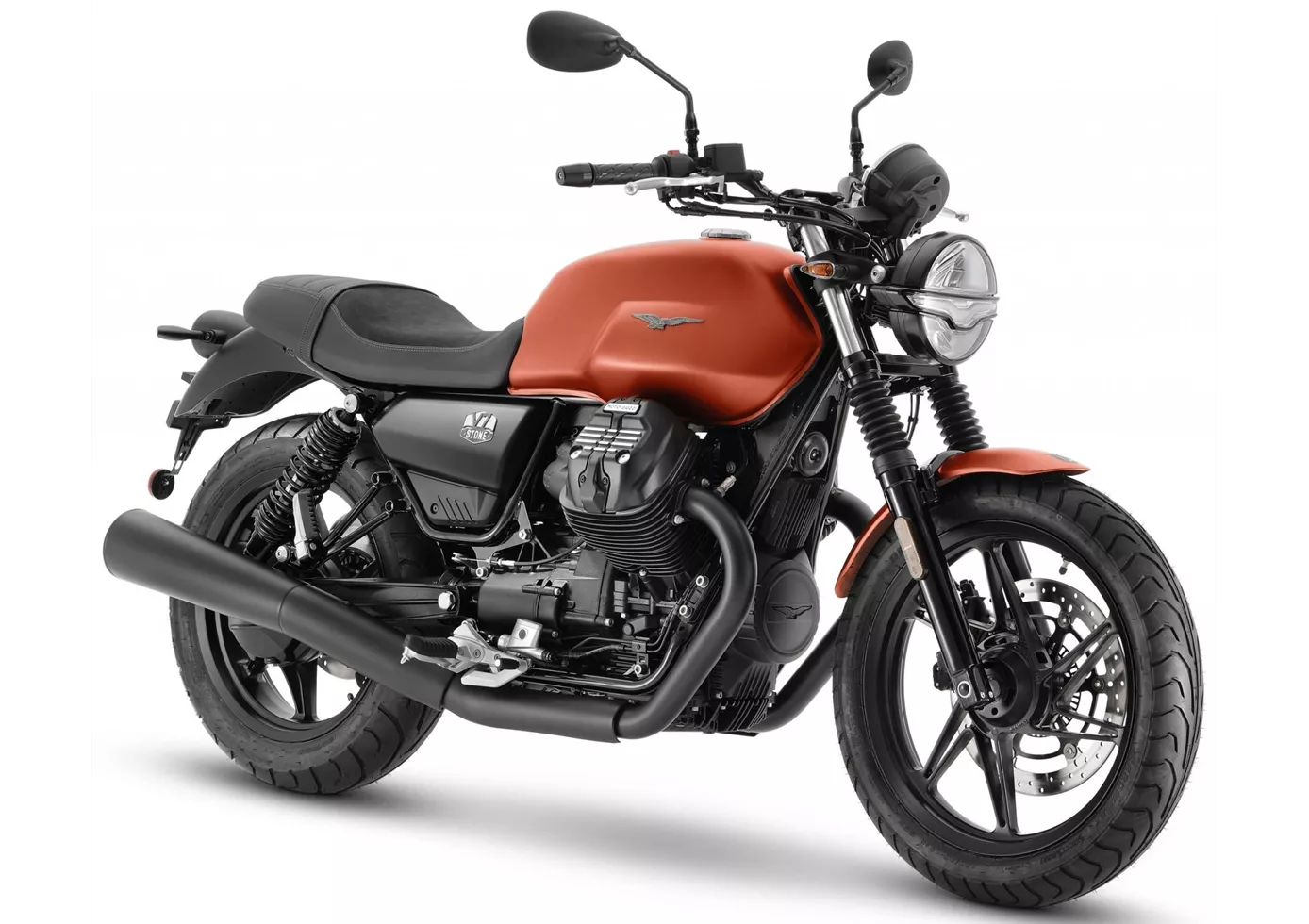
The Italians know exactly how to polish an icon - the V7 Stone also has the characteristic, longitudinally installed V2 engine with the typical sloping cylinders. And with this model in particular, this should appeal not only to true Guzzi fans, but also to all those who are looking for a balanced, uncomplicated motorbike. Although the engine has its typical vibrations, it behaves well, the chassis is more comfortable than sporty, and the seating position is also well suited to the comfortable character. The single-disc brakes at the front even grip surprisingly well and the overall look goes straight to the heart. Only the LCD instruments seem out of place and modern.
Price Comparison Avarage Market Price Yamaha XSR900 vs Moto Guzzi V7 Stone
There are a few key differences between a Yamaha XSR900 2018 and a Moto Guzzi V7 Stone 2022. In terms of price, the actual average price of a Yamaha XSR900 2018 is about 3% higher. A Yamaha XSR900 2018 experiences a loss of 180 GBP in one year of ownership. This is offset by a loss of 200 GBP for a Moto Guzzi V7 Stone 2022. Compared to Moto Guzzi V7 Stone 2022 there are less Yamaha XSR900 2018 bikes available on the 1000PS.de Marketplace, specifically 4 compared to 9. It takes less time to sell a Moto Guzzi V7 Stone with 119 days compared to 123 days for the Yamaha XSR900. Since model year 2016 1000PS.de editors have written 30 reviews for the Yamaha XSR900 and 4 reviews for the Moto Guzzi V7 Stone since model year 2021. The first review for the Yamaha XSR900 was published on 25/11/2015 and now has more than 17,600 views. This compares to more than 72,300 views for the first review on Moto Guzzi V7 Stone published on 14/12/2020.

